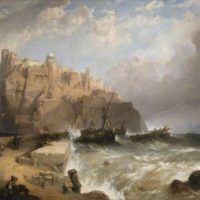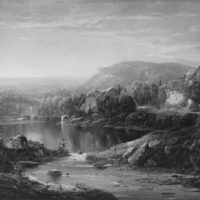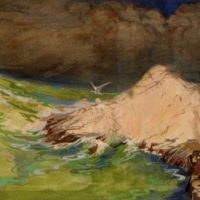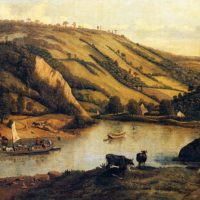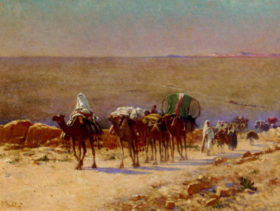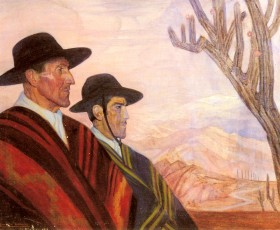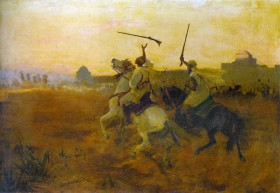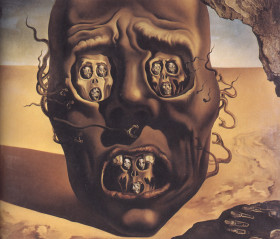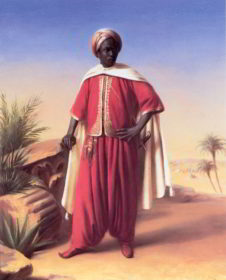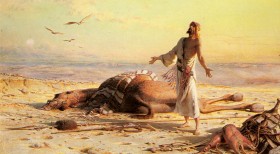Desert Archive
Albert Zimmerman’s adequacy comes up shining in his landscape portrayals in which his mastery on colors (with including slightest variants of them) and choice of scenery really stands out. Here, as the title suggests, the painting portrays an Arabian caravan leaving the city perceived in the far background. They have come a long way in the vast plain but still the huge flat ground allows us to see the city. Thus, we understand the first impression as the journey has just begun. The depicted environment and land with mixture of high mountains and flat grounds represents the Arabian geography which the depicted one is from the greener areas of the country as the Arabian countries mostly contains deserts in majority of their land-space. There […]
The Face of War is Spanish artist Salvador Dali’s attempt to impersonate war itself. It is depicted terrifying, unlikable and to some extent, scary. It was made in 1940 right after the end of the Spanish Civil War and before the beginning of the second World War. The Face of War Analysis The setting is of a desert at the time of late evening when the sun is still lingering near the horizon. The face is dismembered from its body and has withered to death. Though, there are expressions on it. Expressions which are left on a dead man’s face. It’s shock and misery. The face is in the awe by the happenings of a war. On the both sides, it is covered with alive […]
In his time, painter of the “Portrait of an Arab”, Horace Vernet didn’t need an introduction, as he worked for the contemporary King Louis-Philippe and Napoléon III of France. Though, he is still remembered with an honor in art-communities. In early 19th century, he was renowned for his great artworks like Dog of the Regiment, Death of Poniatowski and Battle of Montmirail. His fields of interests varied only between portraits, Arabians and battles. And he didn’t want to paint in the traditional ways. He had grown a particular disinclination with traditional idealized ways of paintings. He wanted to draw things with more general touch and feel, instead of giving his subjects an idealized pose; he created his paintings with more vernacular manner. Thus, the viewer […]




